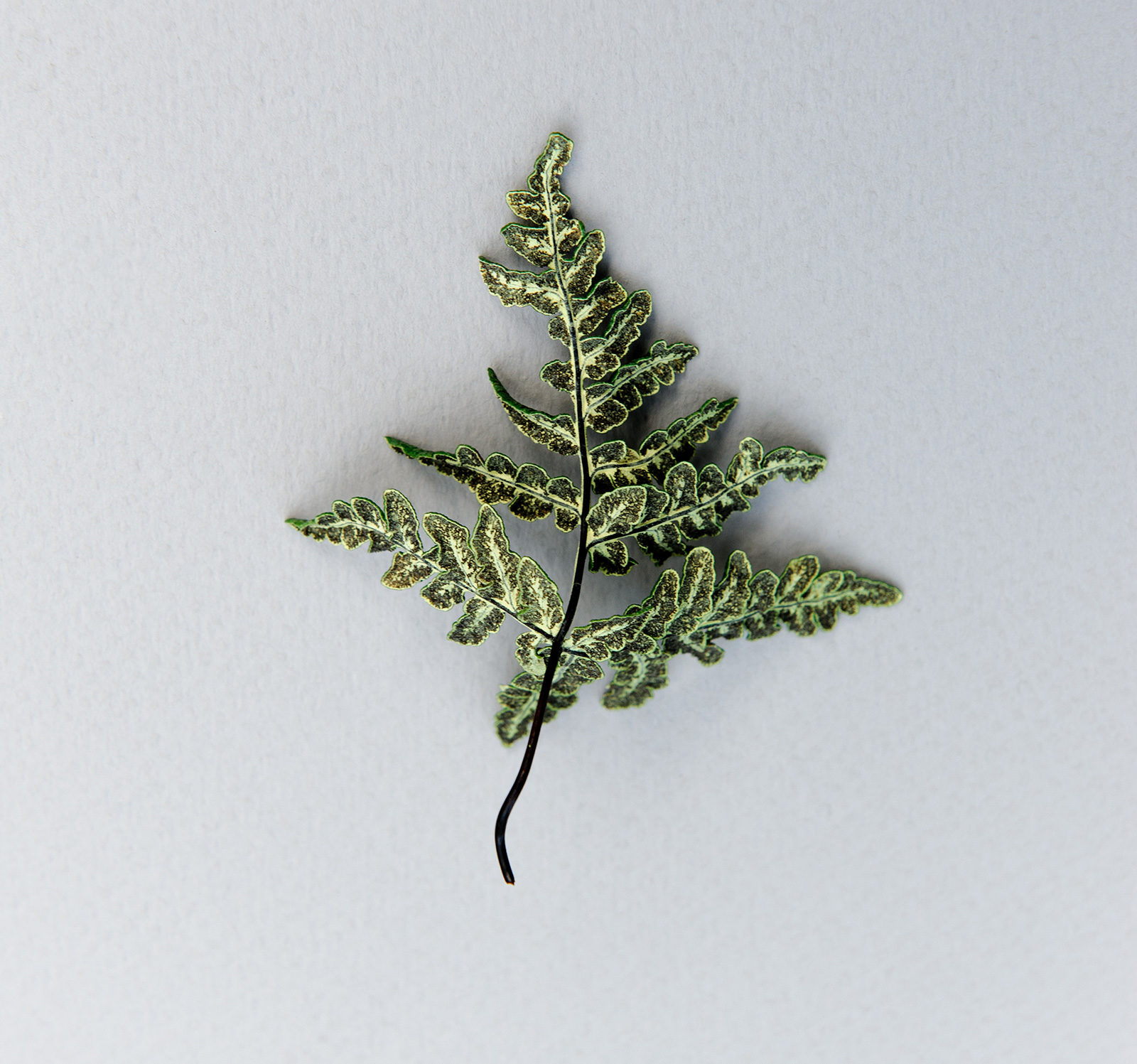At this time of year, you might notice new ferns springing up around the Bay Area. Even though you can find ferns year-round, they’re linked to the rainy season by their need for water during their sexual reproductive cycle.
Ferns reproduce sexually by spores instead of seeds (they also reproduce asexually, but that’s for another article), alternating between a sporophyte and a gametophyte stage.
Most people are familiar with the sporophyte stage: the leafy plants that are big enough to see easily. If you check the undersides of their fronds, sometimes you’ll find brownish fuzz, dots, or lines made up of tiny sacs (called sporangia) that contain microscopic spores. When the spores are mature, the sacs split open and catapult the spores out to be spread by the breeze.
In the right conditions, an individual spore will germinate and grow into a gametophyte—a thin, heart-shaped structure no bigger than a pinky nail. Underneath, it grows reproductive parts: tiny spherical structures produce sperm that swim across the gametophyte in a thin film of water and down the neck of a flask-shaped structure containing an egg. The fertilized egg then grows into a new sporophyte, and the cycle begins again.
Gametophytes are much harder to spot than sporophytes. If you’re on a mission to see a gametophyte in the wild, look carefully on damp, shady banks and you might find some, sometimes even with tiny sporophytes growing.
The Bay Area is home to more than 35 native fern species that grow in a wide variety of habitats—from dry rocky outcrops to shady woodlands, even floating in ponds. Below are just a few species you can find around the Bay Area.
Western sword fern
(Polystichum munitum)

Western sword ferns are common in damp woodlands throughout western North America. You can recognize them by looking at the base of each leaflet, which sort of resembles the hilt of a sword. On the underside of the fronds, you might see some orangeish circles called sori (groups of sporangia). Take a closer look at a sorus with a hand lens, and you can see a little membrane called an indusium, covering it like an umbrella.
Goldback fern
(Pentagramma triangularis)
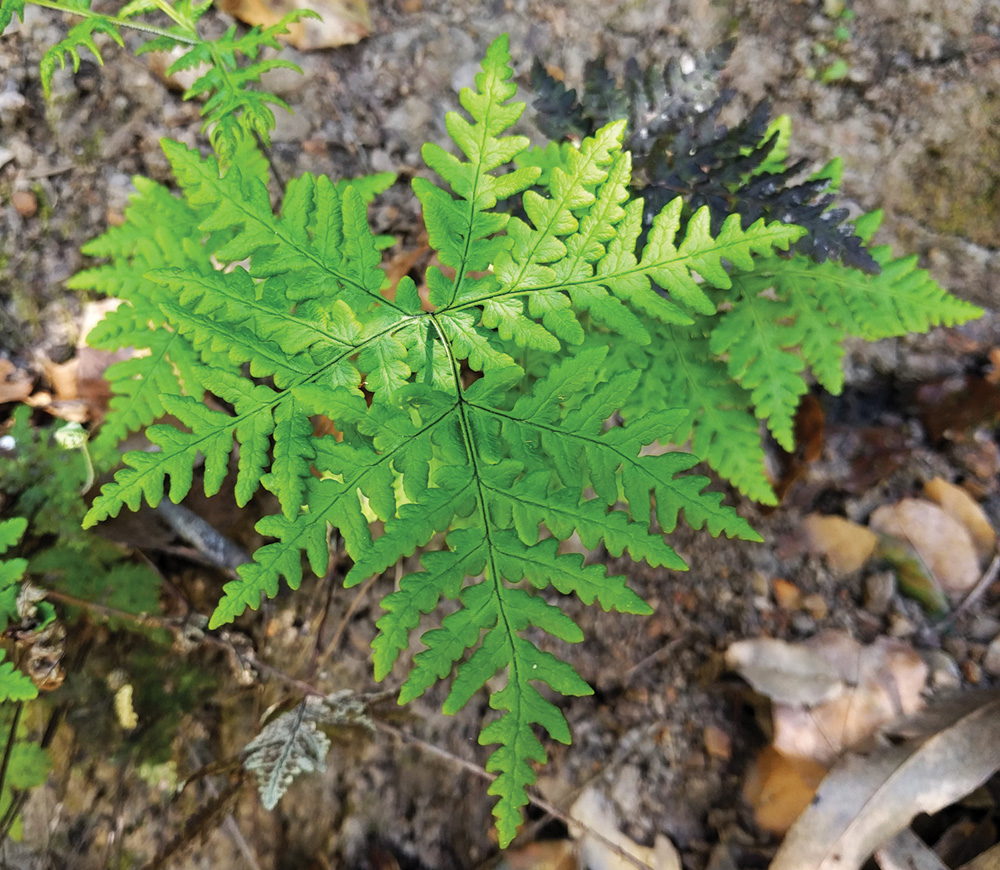
The goldback fern is distinguishable by the bright yellow undersides of its leaves. If you press a frond onto your clothing, some of its yellow exudate will leave a fine print. This powdery substance actually helps goldback ferns survive during the dry season. Their fronds curl up tightly so only the exudate is exposed, protecting them from overheating and drying out. Even though they may appear dead, the fronds will unfurl again after rain.
California maidenhair fern
(Adiantum jordanii)

This delicate-looking fern grows in moist woodlands and can be identified by its black stems and pretty foliage. The edges of its leaflets fold over to make crescent shapes on the bottom of the leaf, with the sporangia tucked inside. Its close relative, the fivefinger fern (Adiantum aleuticum), also grows in the Bay Area along seeps and streams.
Bracken fern
(Pteridium aquilinum)
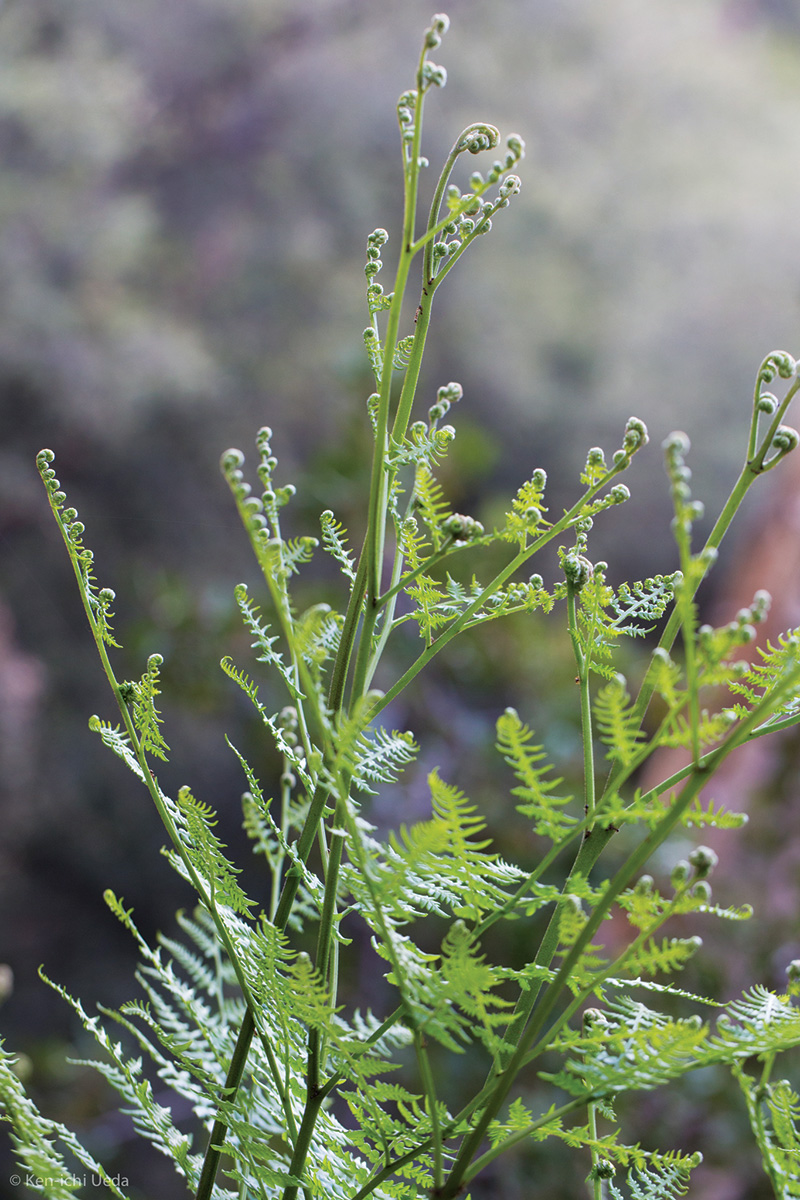
Bracken ferns can be found all over the world, from the subarctic to the subtropics. This deciduous fern spreads by rhizomes deep underground, often forming large stands that die back in the winter. The young fiddleheads are eaten in many cultures, but they are toxic in large amounts because they contain ptaquiloside, a carcinogen; proper preparation can remove most of it.
Cliffbrakes
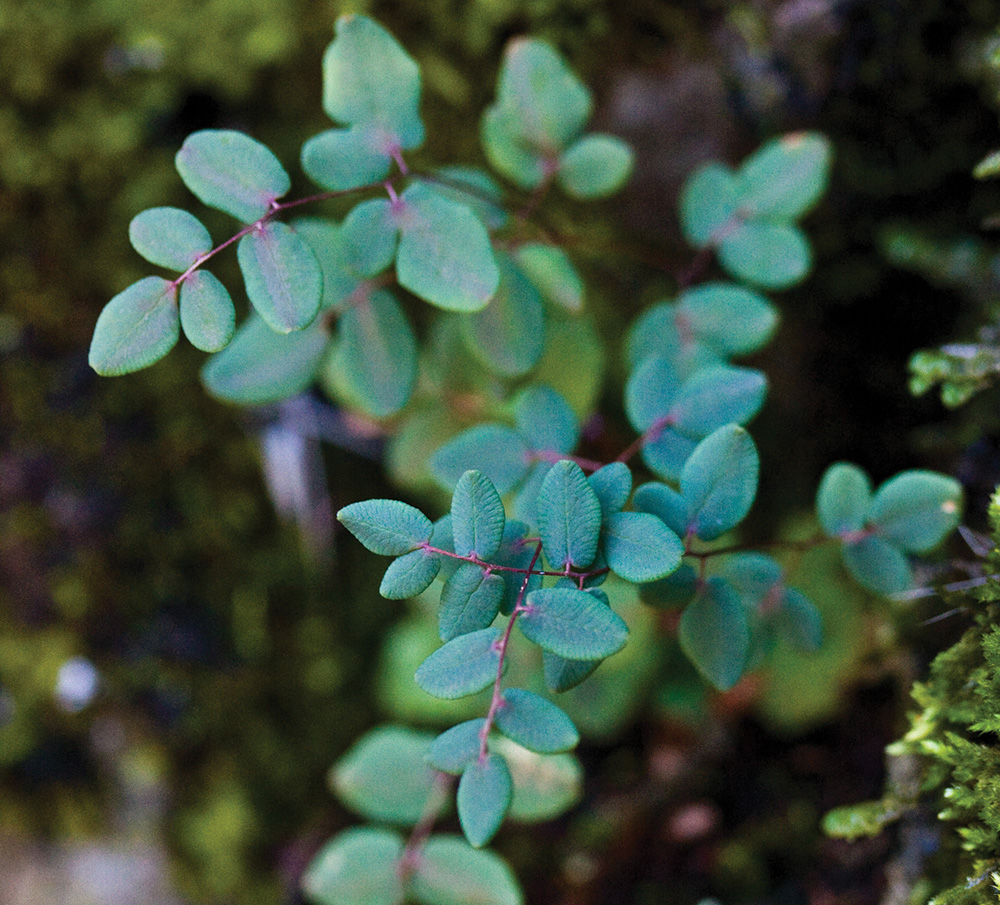
The Bay Area is home to two species of cliffbrakes—coffee fern (Pellaea andromedifolia) and birdsfoot fern (P. mucronata). Growing in dry, rocky slopes, they have bluish-green foliage that can turn purple to brown as it ages. The two species can be distinguished by the tips of their leaflets: the coffee fern has a round tip, while the birdsfoot fern has a pointed tip.
Leather fern
(Polypodium scouleri)
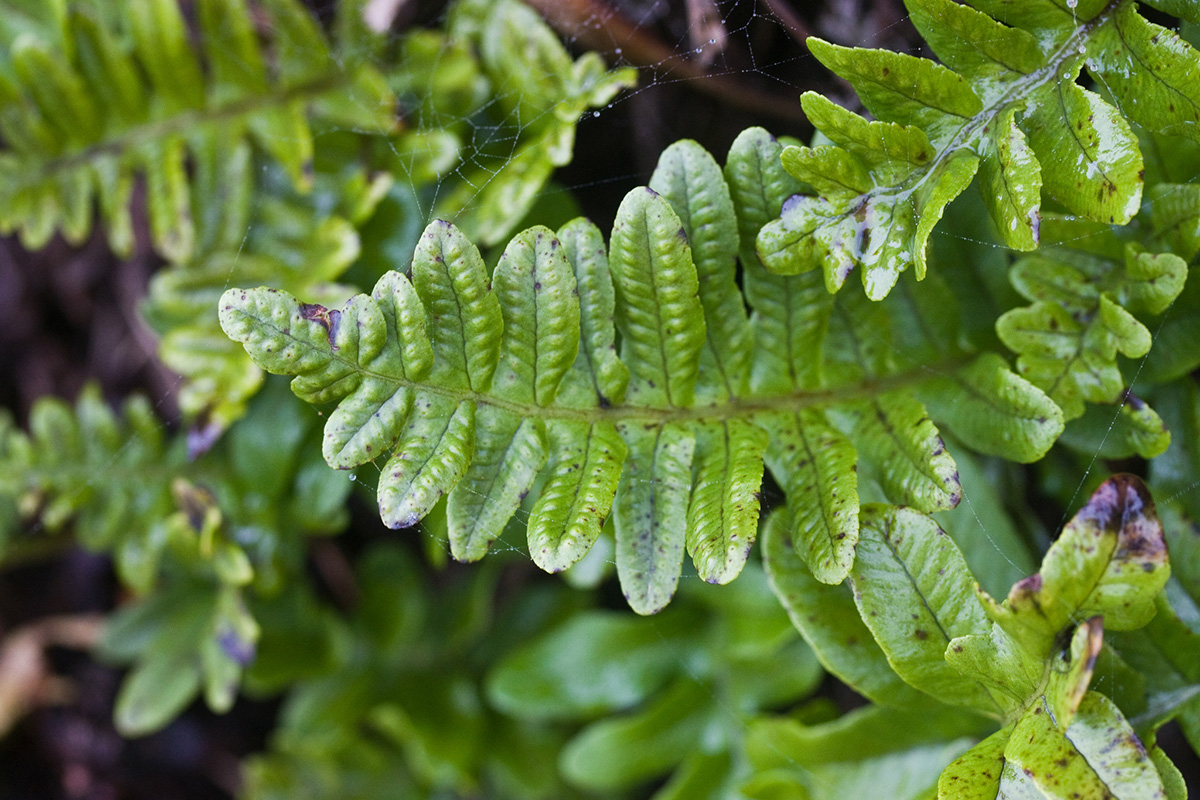
Found mainly in coastal areas and rare in the East Bay, the leather fern can be epiphytic (a plant that grows on another plant or object). It can grow directly in rock crevices or even form huge mats on mossy tree trunks, spreading by rhizomes, or underground stems. The leather fern can be distinguished from other fern species in its Polypodium genus by its evergreen, leathery leaves.

